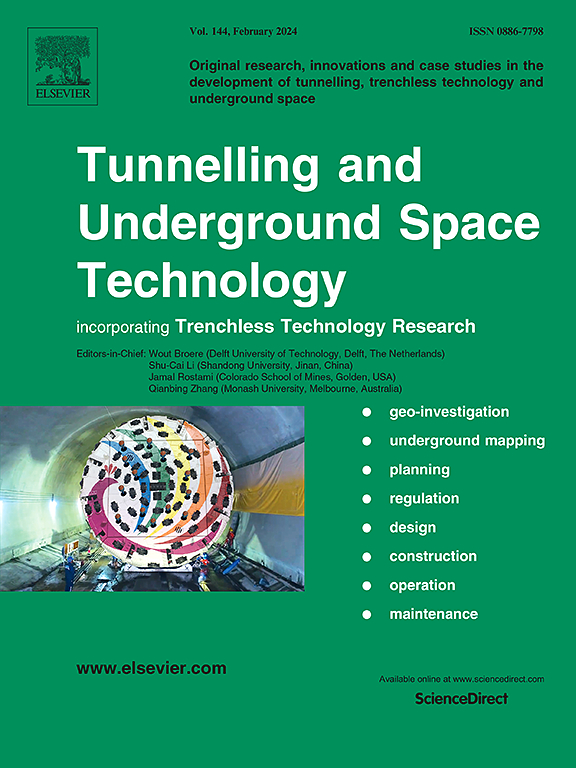FDEM numerical study on the large deformation mechanism of layered rock mass tunnel under excavation-unloading disturbance
IF 6.7
1区 工程技术
Q1 CONSTRUCTION & BUILDING TECHNOLOGY
引用次数: 0
Abstract
During tunnel excavation, the unloading effect leads to a weakening of the mechanical properties of the rock mass, with mechanical parameters exhibiting dynamic variations throughout the unloading process. Therefore, the dynamic evolution of mechanical parameters is a crucial aspect that must be considered in numerical simulations. Through unloading mechanical tests on the slate, this study establishes a quantitative linear relationship model between unloading and changes in deformation modulus and cohesion and further extends this model to tensile strength parameters. Using a horizontally stratified slate tunnel excavation as an example, numerical simulations were conducted to examine the large deformation, fracturing, and swelling process of layered rock masses under the deterioration of cohesion, tensile strength, and deformation modulus. The results show that the weakening of the deformation modulus due to unloading has a minimal impact on rock mass response, while the degradation of cohesion and tensile strength is the critical factor causing large deformations in tunnels. Additionally, as the deterioration of cohesion and tensile strength intensifies, the extent of fracturing and the range of the highly damaged zone in the rock mass significantly increase. The Muzhailing Tunnel project case study verifies the reliability of the proposed FDEM method, which incorporates the effects of unloading-induced weakening, and demonstrates the necessity of accounting for the degradation of mechanical parameters in FDEM simulations.
求助全文
约1分钟内获得全文
求助全文
来源期刊

Tunnelling and Underground Space Technology
工程技术-工程:土木
CiteScore
11.90
自引率
18.80%
发文量
454
审稿时长
10.8 months
期刊介绍:
Tunnelling and Underground Space Technology is an international journal which publishes authoritative articles encompassing the development of innovative uses of underground space and the results of high quality research into improved, more cost-effective techniques for the planning, geo-investigation, design, construction, operation and maintenance of underground and earth-sheltered structures. The journal provides an effective vehicle for the improved worldwide exchange of information on developments in underground technology - and the experience gained from its use - and is strongly committed to publishing papers on the interdisciplinary aspects of creating, planning, and regulating underground space.
 求助内容:
求助内容: 应助结果提醒方式:
应助结果提醒方式:


